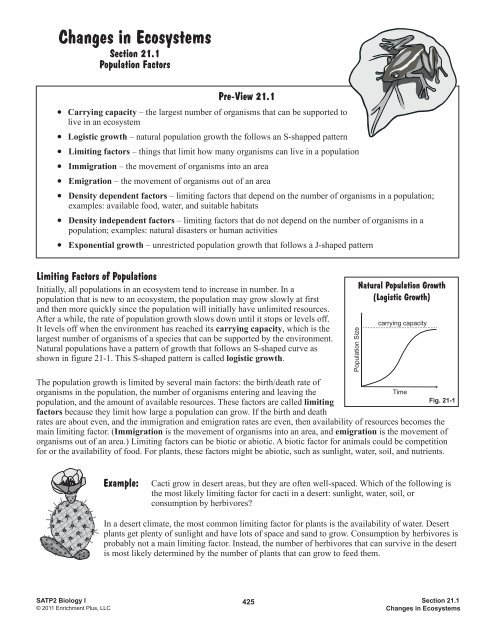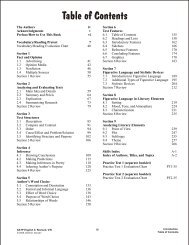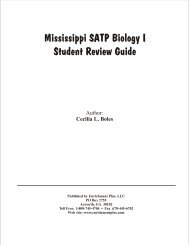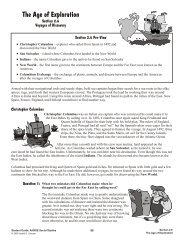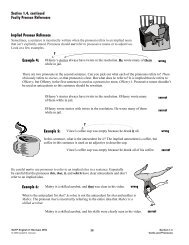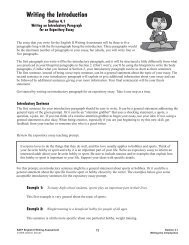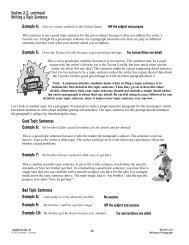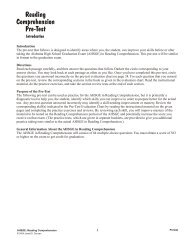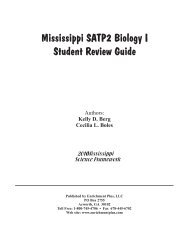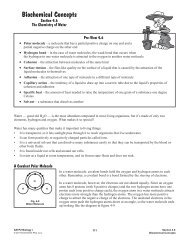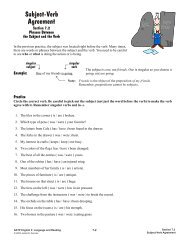Kingdom Plantae - Enrichment Plus
Kingdom Plantae - Enrichment Plus
Kingdom Plantae - Enrichment Plus
Create successful ePaper yourself
Turn your PDF publications into a flip-book with our unique Google optimized e-Paper software.
Changes in EcosystemsSection 21.1Population FactorsPre-View 21.1 Carrying capacity – the largest number of organisms that can be supported tolive in an ecosystem Logistic growth – natural population growth the follows an S-shapped pattern Limiting factors – things that limit how many organisms can live in a population Immigration – the movement of organisms into an area Emigration – the movement of organisms out of an area Density dependent factors – limiting factors that depend on the number of organisms in a population;examples: available food, water, and suitable habitats Density independent factors – limiting factors that do not depend on the number of organisms in apopulation; examples: natural disasters or human activities Exponential growth – unrestricted population growth that follows a J-shaped patternLimiting Factors of PopulationsInitially, all populations in an ecosystem tend to increase in number. In apopulation that is new to an ecosystem, the population may grow slowly at firstand then more quickly since the population will initially have unlimited resources.After a while, the rate of population growth slows down until it stops or levels off.It levels off when the environment has reached its carrying capacity, which is thelargest number of organisms of a species that can be supported by the environment.Natural populations have a pattern of growth that follows an S-shaped curve asshown in figure 21-1. This S-shaped pattern is called logistic growth.Population SizeNatural Population Growth(Logistic Growth)carrying capacityThe population growth is limited by several main factors: the birth/death rate oforganisms in the population, the number of organisms entering and leaving theTimepopulation, and the amount of available resources. These factors are called limitingfactors because they limit how large a population can grow. If the birth and deathrates are about even, and the immigration and emigration rates are even, then availability of resources becomes themain limiting factor. (Immigration is the movement of organisms into an area, and emigration is the movement oforganisms out of an area.) Limiting factors can be biotic or abiotic. A biotic factor for animals could be competitionfor or the availability of food. For plants, these factors might be abiotic, such as sunlight, water, soil, and nutrients.Fig. 21-1Example:Cacti grow in desert areas, but they are often well-spaced. Which of the following isthe most likely limiting factor for cacti in a desert: sunlight, water, soil, orconsumption by herbivores?In a desert climate, the most common limiting factor for plants is the availability of water. Desertplants get plenty of sunlight and have lots of space and sand to grow. Consumption by herbivores isprobably not a main limiting factor. Instead, the number of herbivores that can survive in the desertis most likely determined by the number of plants that can grow to feed them.SATP2 Biology I© 2011 <strong>Enrichment</strong> <strong>Plus</strong>, LLC425Section 21.1Changes in Ecosystems


